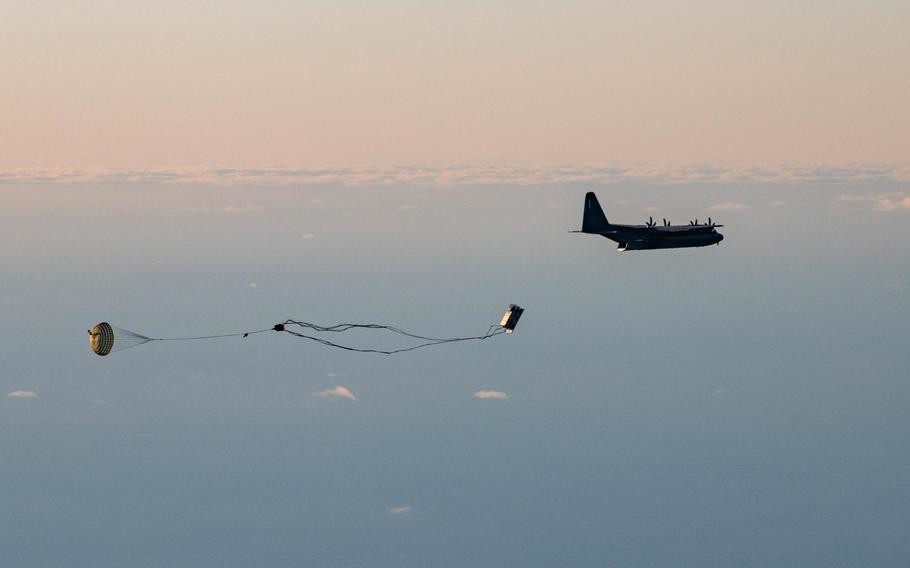A US Hercules cargo plane tested a new cruise missile system in Arctic Norway
It's the system's first test in Europe.

The U.S. Special Operation Wing on November 9 successfully test fired the newly developed Rapid Dragon weapon system off northern Norway.
The airdropped deployment box with a long-range JASSM-ER cruise missile is the first time Rapid Dragon has been tested in Europe.
Flying north from an airbase in the United Kingdom, the military cargo plane tested the palletized munition system as part of the ATREUS training events going in parallel in Norway, Poland, Romania and the United Kingdom in cooperation with the U.S. Special Operations Europe.
The area where the Rapid Dragon was tested is part of Andøya Space Defense Range, some 300 kilometers inside the Arctic Circle.
“This is not signaling to Russia or any adversary,” U.S. Army Cpt. Margaret Collins told the Barents Observer last week when the plans first were made public.
From this part of the Norwegian Sea, the distance to the home ports for Russia’s nuclear submarines on the Kola Peninsula is some 650 kilometers.
#BREAKING video from 352nd Special Operations Wing successful test fire of a palletized Joint Air to Surface Standoff Missile (JASSM). Successful extraction of deployment box, release of JASSM with wing extension, and motor engagement during exercise #ATREUS22 #SOFinEurope pic.twitter.com/3hLcXDJ3bl
— US Spec Ops Europe (@US_SOCEUR) November 9, 2022
An advantage of the new weapon system is that the United States could rapidly provide massive strike capability to any NATO member by using the existing fleet of transport planes. Such planes, like the Hercules, can operate from landing runways as short as 900 meters.
There are several tens of such runways in northern Scandinavia, airports that can deploy the planes in case military air bases with longer runways are attacked by an adversary.
The module with the missiles is designed as a roll-on roll-off capability to enable rapid fielding and eliminate the need for aircraft modification.
Rapid Dragon has an onboard control module attached to the pack that enables the missiles and battle management system to communicate so missions and targets can be updated while the plane is airborne.
After the module is parachuted, weapons will be systematically released. Each will ignite, pull up, and proceed normally to the target.
This article has been fact-checked by Arctic Today and Polar Research and Policy Initiative, with the support of the EMIF managed by the Calouste Gulbenkian Foundation.
Disclaimer: The sole responsibility for any content supported by the European Media and Information Fund lies with the author(s) and it may not necessarily reflect the positions of the EMIF and the Fund Partners, the Calouste Gulbenkian Foundation and the European University Institute.
